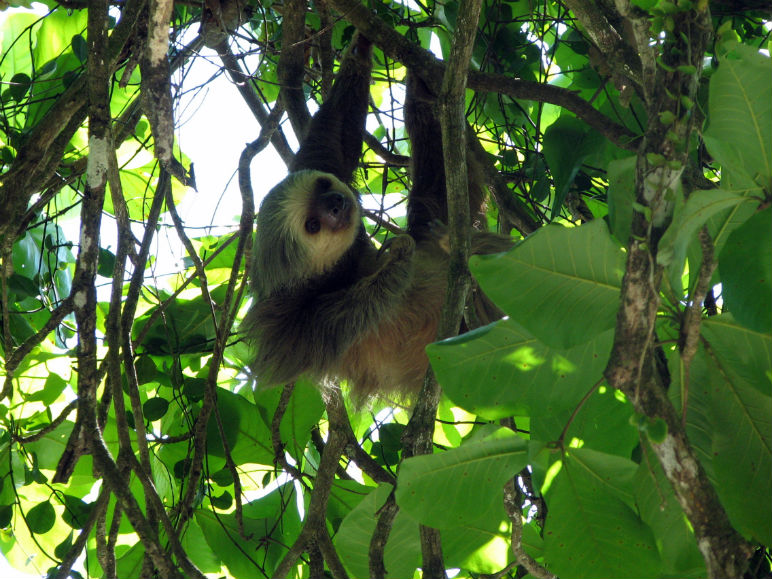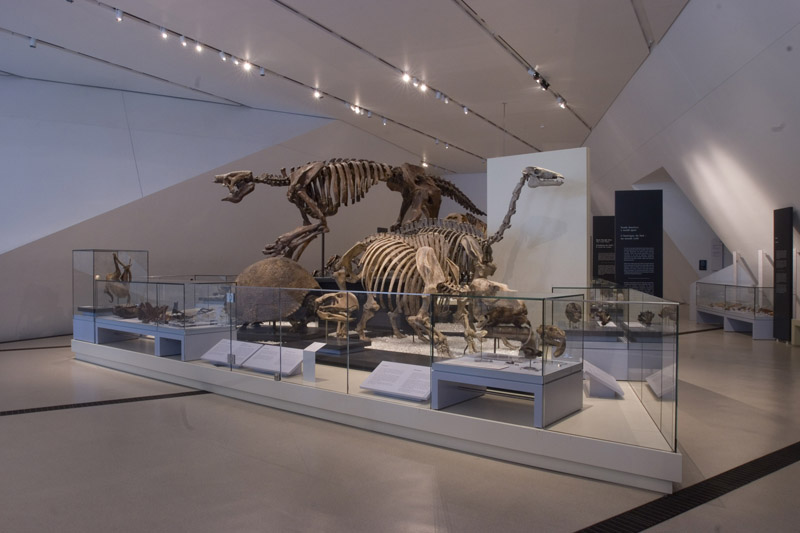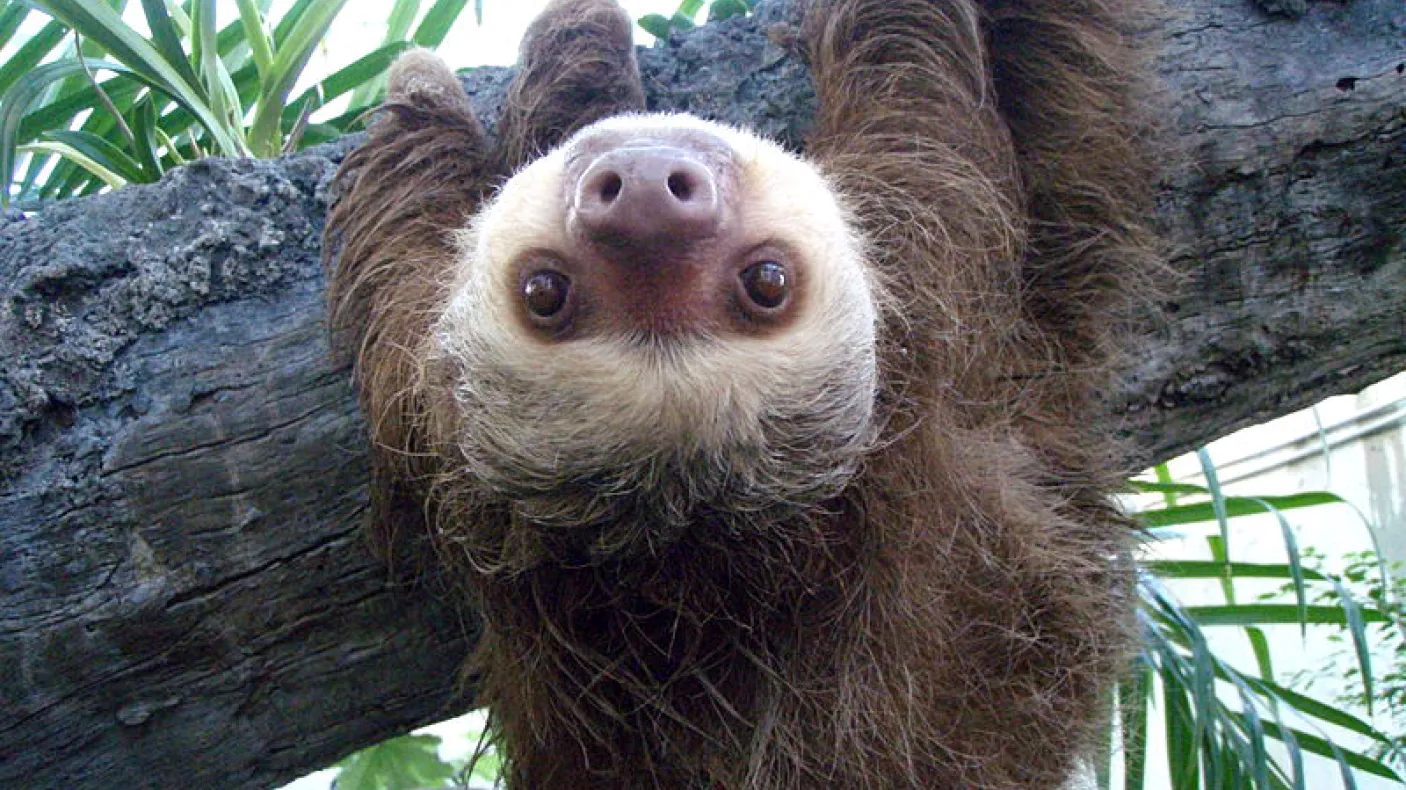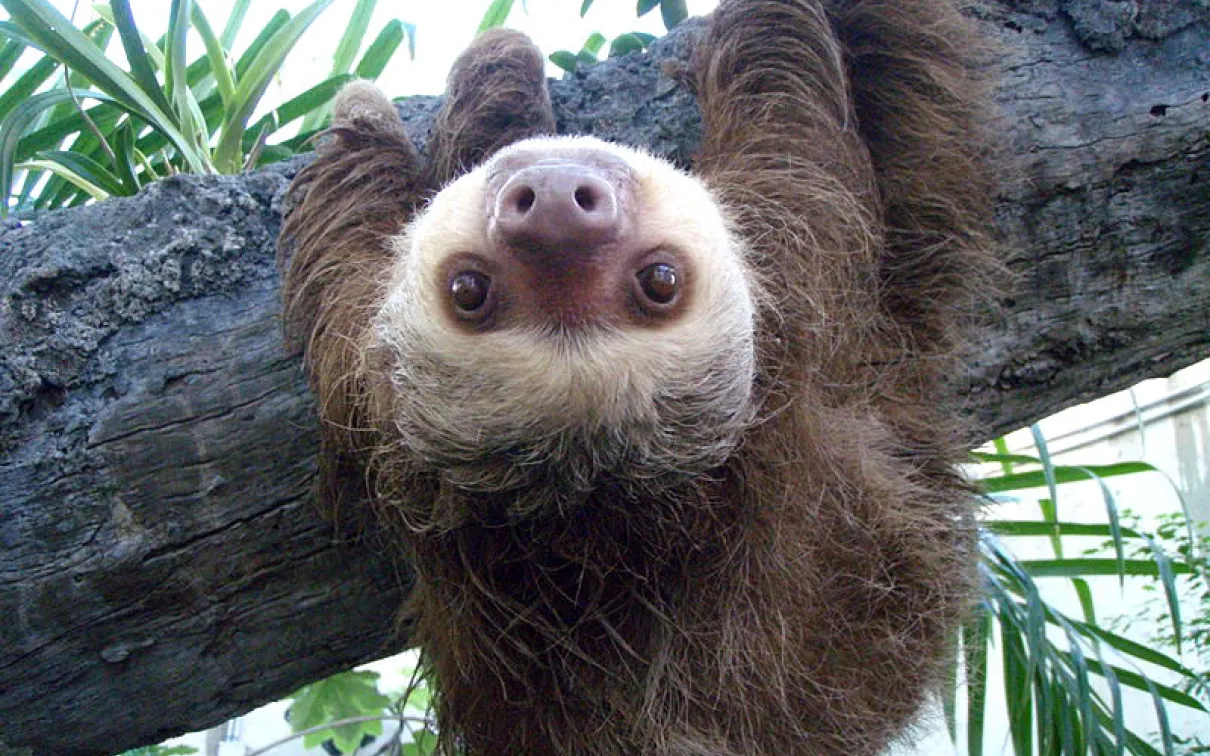Sloth Life
Published
Categories
Author
Blog Post
It’s no secret that sloths basically took over the internet in recent years after a series of adorable YouTube videos, listicles, and Kristen Bell’s infamous meltdown over her slothy Birthday gift. From the photobombing sloth to the Mona Lisa sloth, they were everywhere! Before another cuddly creature overtakes the sloth’s #1 spot, we thought we’d better hop on this wagon.
Have you ever visited the Age of Mammals Reed Gallery on level 2 of the museum? If you have, you’ve probably seen our spirited two-toed sloth suspended from a tree branch. As much as this animal is beloved, they are unfairly labelled as the laziest terrestrial mammal on earth. Perhaps this stereotype is a direct result of their Spanish name, ‘perezosos’, meaning the ‘lazies’. Not to mention, they sleep about 15-20 hours a day! But their sedentary lifestyle is a consequence of their diet. Two-toed sloths are nocturnal arboreal herbivores that spend most of their time suspended from tree canopies. They feast on leaves, shoots, fruit, and the occasional creepy crawler. This diet takes time to digest and provides little nutrition, energy, and speed. Because they are so slow moving, they cannot evade predators particularly well while exploring the forest floors; they prefer to remain hidden away in their tree-top dwellings.

Hoffmann's two-toed sloth (Choloepus hoffmanni) in Manuel Antonio National Park, Costa Rica. Created by Leyo. November 2006.
http://upload.wikimedia.org/wikipedia/commons/8/85/Two-toed_sloth_Costa_Rica.jpg
For a mammal that hangs upside-down for the better part of their lives, they are pretty incredible beings. Not only do they eat, sleep, mate, and give birth upside-down, but they also host a whole ecosystem of algae and fungi in their fur! While this may seem a little gross, their fur actually facilitates the lifecycle of moths. Talk about unusual friends in unusual places! Once a week, sloths use all their energy to descend to the forest floor and defecate at the base of trees. Not only does this fertilize the trees—and nourish their food—but their stool also provides a space for moths to lay eggs. Once they climb back up the tree, moths hop on and mate in their fur.
So why is a modern species of sloth exhibited next to the skeletons of ancient mammals? The two-toed tree sloth is actually the only living relative (albeit distant) of the ancient ground sloth (exhibited behind). The evolution of sloths is pretty incredible, considering the average two-toed sloth only weighs between 4 and 8 kg. Oddly enough, they are excellent swimmers and have the lowest body temperature of any living mammal. So next time you’re passing through the Age of Mammals gallery, you’ll know some of the secrets our sloth conceals behind that cheeky smile!

View of the South American mammal collection, Reed Gallery of the Age of Mammals. May 2008. ROM2008_10041_9.jpg


